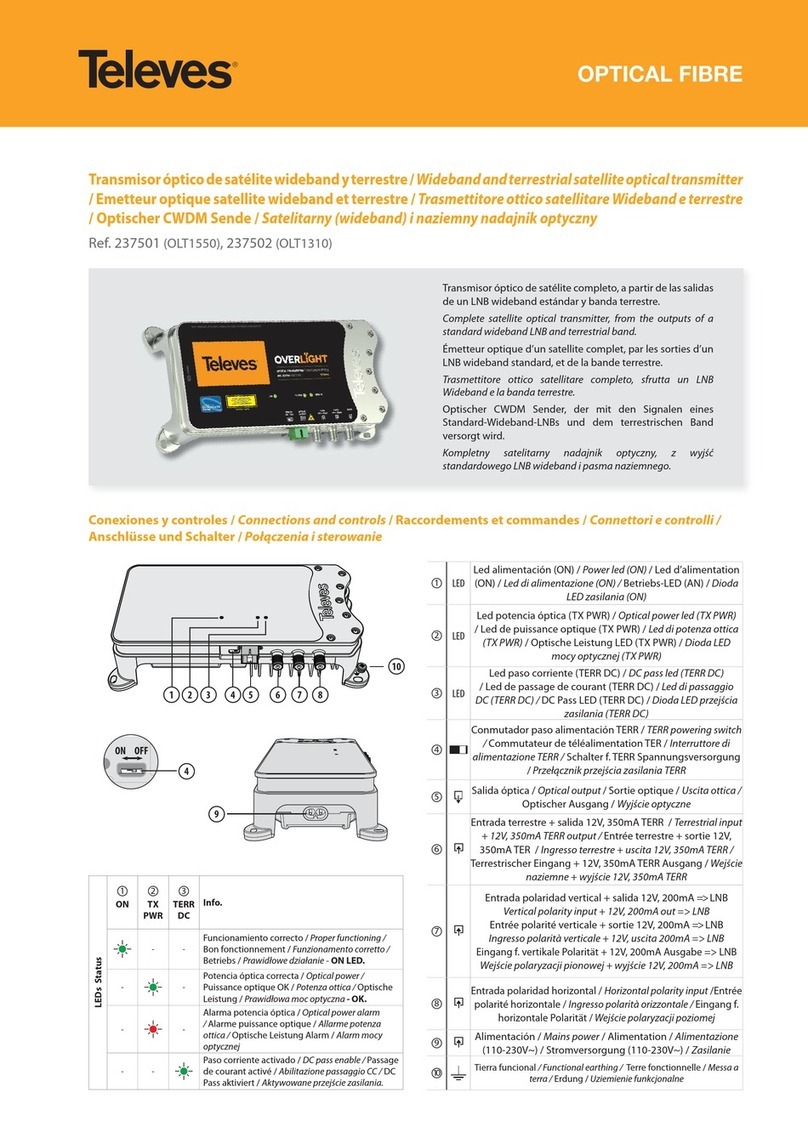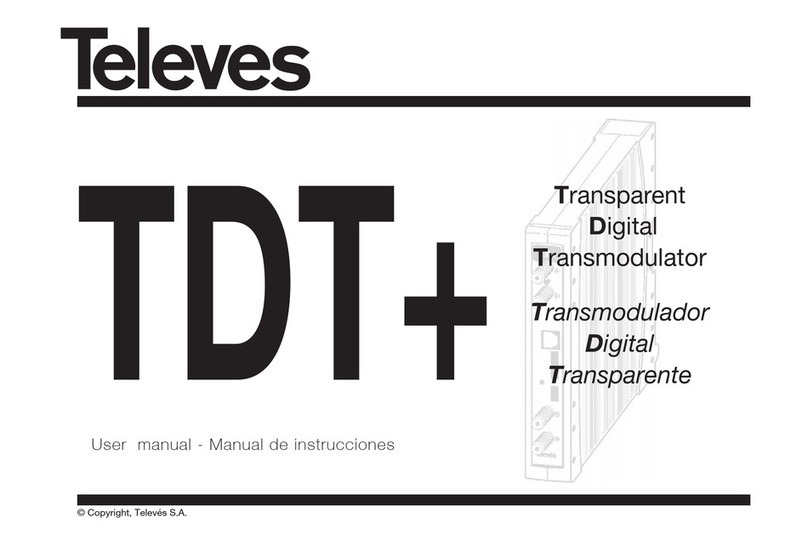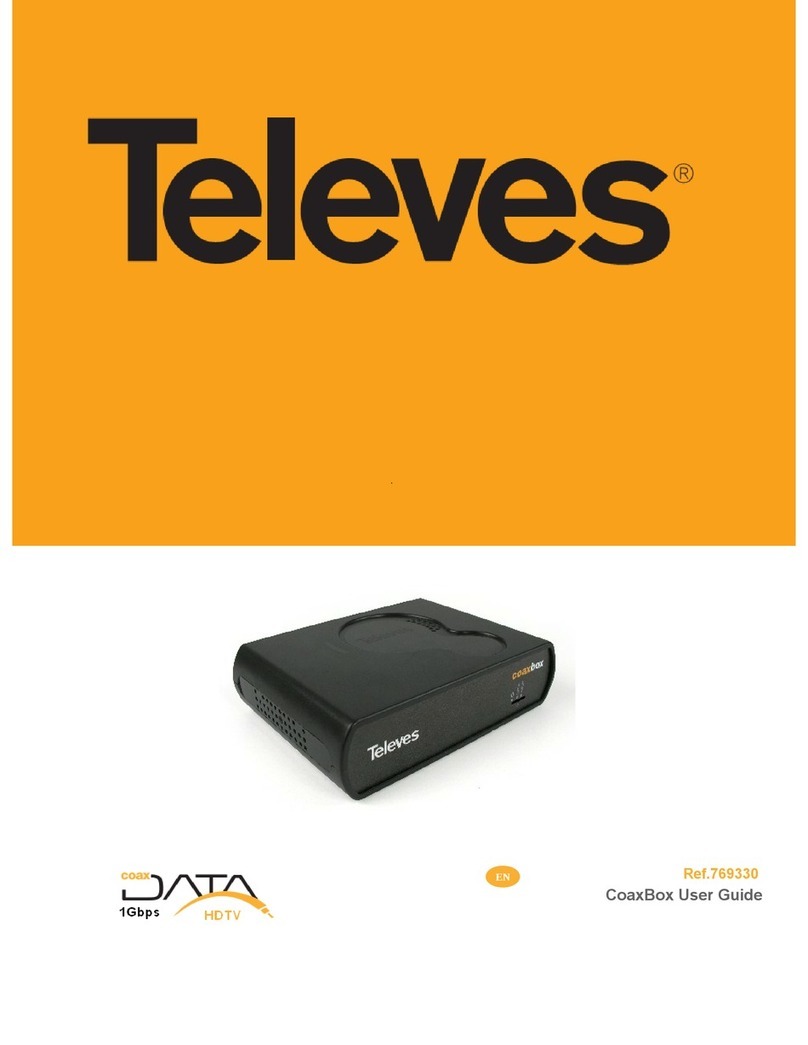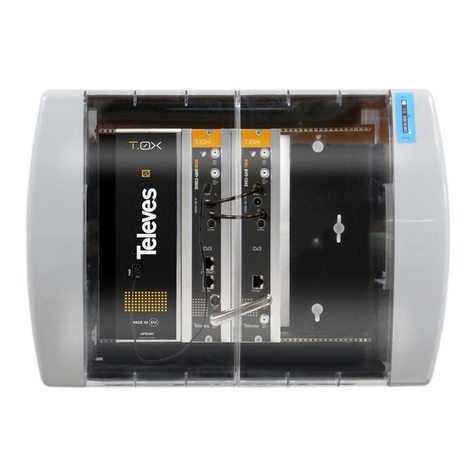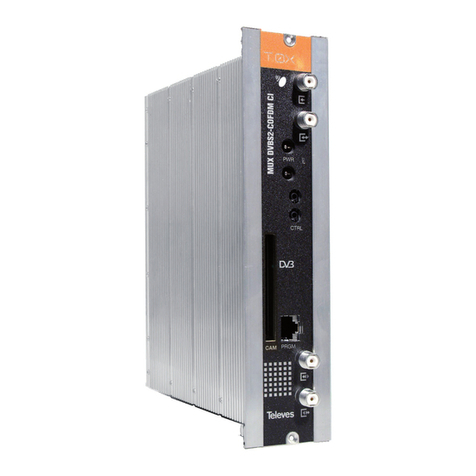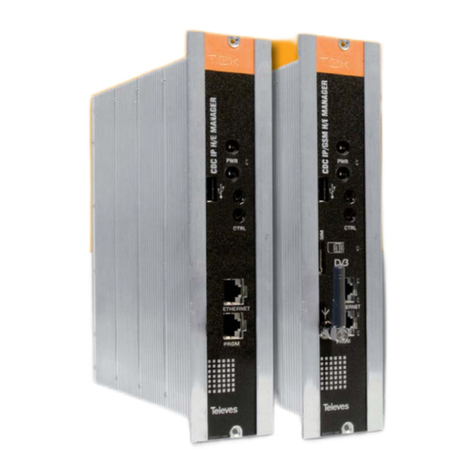
EN
5
1. Technical specifications
* The unit’s consumption with CAM will depend on the type of CAM being used. For the LNB it is considered a standard consumption of 250mA.
The Power Supply Unit is able to powering up to seven DVBS2-QAM CI modules maximum.
Is necessary to use both PSU outputs when consumption of one of them exceeds 4A (maximum current in each output).
The technical characteristics described are dened for a maximum ambient temperature of 45°C (113ºF). Forced ventilation must be used for higher temperatures.
Satellite
Demodulator
Input Frequency MHz 950 - 2150 Through losses (typ.) dB < 1.5
Symbol rate 7.5 Mbaud 10 -30 Modulation DVB-S2 QPSK, 8PSK
DVB-S 2 - 42.5 DVB-S QPSK
Frequency Steps MHz 1 FEC Inner code LDPC 9/10, 8/9, 5/6, 4/5, 3/4, 2/3, 3/5, 1/2, 1/4,
1/3, 2/5
Input and Output
connectors type “F”female FEC Outer code Bose-Chaudhuri-Hocquenghem
Input impedance ohm 75 Roll-o Factor % 20, 25, 35
LNB power&tone control Vdc/KHz 13-17- OFF / 22KHz (ON-OFF) Return losses (min.) dB 10
QAM
Modulator
Modulation format QAM 16, 32, 64, 128, 256 Scrambling DVB ET300429
Symbol Rate max. Mbaud 6,9 Interleaving DVB ET300429
Roll-o Factor % 15 Bandwidth (max.) MHz 8.3
Block Code Reed Solomon (188, 204) Spectral inversion (selec.) Normal / Inverted
RF output
Output Frequency (selec.) MHz 46 - 862 Through losses (typ.) dB < 1,5
Frequency steps KHz 250 Return losses (typ.) dB > 12
Output level (max.) (selec.) dBμV 80 ±5 Input and Output
connectors type “F” female.
Output level adjustment
(progr.) dB > 15 Output Impedance ohm 75
General
Consumption 24Vdc
(with signal)* mA
300 (no CAM inserted; LNB power OFF)
400 (CAM inserted; LNB power OFF)
550 (no CAM inserted; LNB power ON)
650 (CAM inserted; LNB power ON)
Protection index IP20






